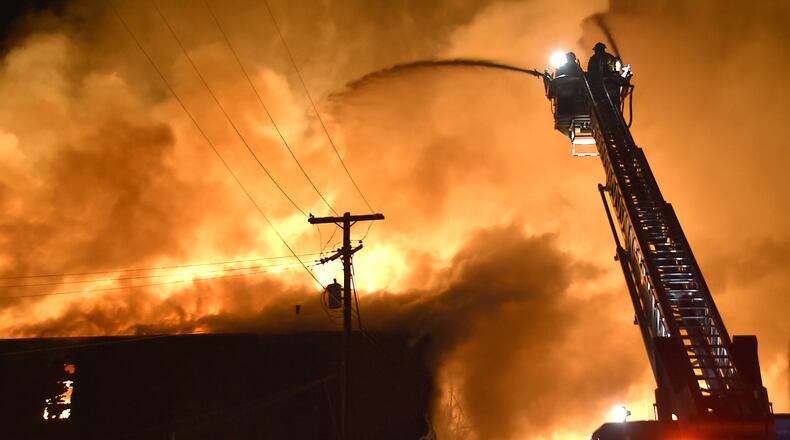It required 42 firefighters and 11 fire engines at the scene, plus Box 27 Associates, mutual aid vehicles and personnel, and a heavy police presence to close the overpass and other streets.
In the months after the fire, the division put an emphasis on code enforcement, particularly storage and sprinkler requirements, Springfield Assistant Fire Chief and Fire Marshal Brian Miller said. The fire wasn’t the result of improper storage, sprinklers or code enforcement, he said, but it highlighted the importance of those issues.
“Businesses will move into a building thinking it’s sufficient for their needs and they find out the way they want to use that space really is not appropriate for the safety measures already built into the building,” Miller said.
Landlords will often ensure business owners properties are built for a certain use, he said, but that’s not always the case. The fire and building regulations divisions work to educate landlords and business owners on how to proceed with safety issues.
“We’re there to help you, not just write you a ticket,” Miller said.
The Tri-State call came in as a small fire, like a garbage can outside of the warehouse, said Battalion Chief Matt Smith, who served as incident commander. As firefighters arrived on scene, the fire wasn’t very big but they were concerned about it spreading, he said.
Within 15 minutes, firefighters realized the building was holding the smoke in and then it began bursting out, Smith said.
“It scaled up extremely quickly from ‘This isn’t too bad,’ to ‘Oh, we’re in one of the big ones’,” said Smith, who was one of the first firefighters in the Crowell-Collier Building in 1999.
The Tri-State Pallet Fire was the largest Smith had ever fought in a command role.
“You gain a new appreciation for your training, but you can very easily become overwhelmed by decision-making and communication,” he said. “The training I’ve gone through helped me quite a bit to manage that entire situation.”
In freezing temperatures, firefighters fought flames fueled by thousands of wooden pallets that reached more than 20 feet above the treeline. It took millions of gallons of water and several days to extinguish.
Some firefighters were called in for overtime to come to the scene, Miller said, while others were called to provide assistance at other stations in the city. About 305 hours of labor were performed at the scene, not including mutual aid from Springfield and Moorefield twps. The incident cost the city about $6,800 in overtime pay.
Firefighters built up ice on their helmets and gear as they battled the fire. One fire engine froze to the ground and needed to be heated from the outside to move it.
The division also kept the fire from spreading to two separate exposed buildings, including one containing a large amount of tires.
“We didn’t have it leap the street or leap over to another building and cause problems,” Smith said. “I’m very proud of that.”
Despite the cold temperatures, only one minor injury occurred at the scene, which was treated the next day with no lost time.
The building was demolished last March. Owner Tom Lagos said he has no future plans for the property.
The cause of the fire was listed as undetermined, but scrappers were likely to blame for starting the fire. No charges were filed as part of the investigation due to a lack of evidence, Clark County Prosecutor Andy Wilson said last year.
The fire burned for several days, Miller said, and the division could’ve broken down its operational periods differently. The division also could have set up a command post using a trailer from the Clark County Emergency Management Agency, rather than the SUVs used for typical fire runs, Smith said.
“It’s one thing we learned and did some training on after that,” Smith said.
About the Author

